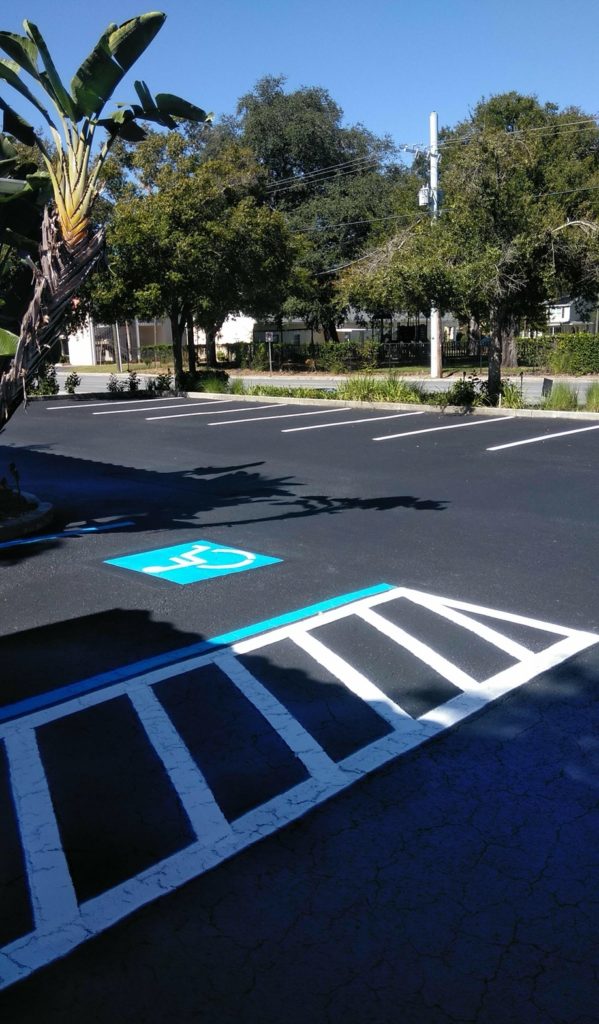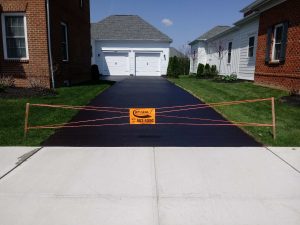Discover the Power of Industrial Parking Area Paving and Asphalt Sealing
Discover the Power of Industrial Parking Area Paving and Asphalt Sealing
Blog Article
Hot Mix Asphalt: A Sustainable Option for Pavement
Hot Mix Asphalt (HMA) has emerged as a leading sustainable choice for pavement solutions, providing a myriad of innovative technologies and environmental benefits. Its ability to recycle products and lower energy consumption presents an engaging instance for its adoption in road construction projects. The long-term efficiency and sturdiness of HMA make it a favored option for framework growth. As the demand for environment-friendly building practices expands, checking out the nuances of HMA's sustainability can give useful insights right into the future of pavement remedies.
Ecological Advantages of Warm Mix Asphalt

Furthermore, Hot Mix Asphalt assists to alleviate urban heat island results. Its dark color takes in sunlight, reducing the amount of warm reflected back right into the ambience contrasted to lighter-colored pavements. This can decrease ambient temperatures in urban areas, decreasing the need for air conditioning and eventually decreasing power usage.
Furthermore, Hot Mix Asphalt adds to enhanced stormwater administration. Its porous nature permits water to recharge and infiltrate the sidewalk groundwater supplies, minimizing drainage and the threat of flooding. These ecological advantages make Warm Mix Asphalt a lasting option for leading roadways and freeways.
Energy Efficiency in HMA Manufacturing
Is energy effectiveness an important aspect in the production of Hot Mix Asphalt (HMA)? Energy plays a considerable duty in the manufacturing of HMA, affecting both expense and environmental sustainability. One key facet of energy performance in HMA manufacturing is the use of warm mix asphalt (WMA) technologies.
Furthermore, advancements in plant technologies have actually led to more energy-efficient HMA production processes. By maximizing power usage in HMA production, the market can lower its carbon footprint while preserving high-quality pavement materials.
Recyclability of Warm Mix Asphalt
The recyclability of Hot Mix Asphalt (HMA) is a critical element of its sustainability and long-lasting ecological impact. HMA is among one of the most recycled materials in the USA, with over 100 million tons of recovered asphalt pavement (RAP) being reused every year in new pavement construction. Reusing HMA uses numerous environmental benefits, such as reducing the demand for virgin products, lowering energy intake throughout manufacturing, and decreasing the quantity of waste sent out to garbage dumps.
The process of recycling HMA entails crushing the existing pavement, crushing it right into smaller sized pieces, and blending it with brand-new aggregate and asphalt binder to create a recycled mix. On the whole, the recyclability of HMA plays a significant role in advertising sustainable practices within the pavement market.

Long-Term Performance of HMA
Asphalt pavements demonstrate toughness and strength over an extensive duration, mirroring the lasting efficiency of Warm Mix Asphalt (HMA) The durability of HMA can be associated to its capability to stand up to hefty website traffic lots, rough climate condition, and the results of aging. Studies have actually revealed that well-designed and properly built HMA sidewalks can last for two decades or even more with routine maintenance. The secret to making best use of the lasting efficiency of HMA hinges on utilizing premium materials, following why not check here ideal techniques in building and construction, and applying reliable maintenance techniques. Proper water drainage, regular assessments, and timely repairs are essential for maintaining the architectural integrity of HMA sidewalks gradually. Additionally, advancements in HMA modern technology, such as making use of polymer-modified binders and warm mix asphalt, have actually even more enhanced the longevity and durability of HMA pavements. By focusing on quality building and construction and maintenance practices, HMA remains to prove itself as a lasting and affordable solution for resilient pavement facilities.

HMA: Durability and Sustainability
Showing both toughness and sustainability, Hot Mix Asphalt (HMA) has actually become a keystone in the building of long-lasting sidewalk infrastructures - commercial parking lot paving. HMA's sturdiness originates from its capability to withstand heavy lots, extreme weather special info condition conditions, and high website traffic volumes, making it a reputable choice for roadways, highways, and flight terminal paths. The structure of HMA, which generally consists of accumulations, binder, and filler, plays a vital role in improving its long life and resistance to tear and use
Moreover, HMA's sustainability depends on its recyclability and energy-efficient manufacturing procedure. The ability to reuse redeemed asphalt sidewalk (RAP) in new HMA blends lowers the demand for virgin materials and lessens the ecological impact of pavement building and upkeep. In addition, the energy efficiency of creating HMA exists in its reduced blending temperature levels compared to various other sidewalk products, leading to decreased energy usage and greenhouse gas exhausts.
Verdict
In conclusion, warm mix asphalt (HMA) uses a sustainable solution for sidewalk with its eco friendly characteristics. HMA's recyclability, power effectiveness in production, and lasting longevity make it an environment-friendly option article for road building and construction.
HMA is one of the most recycled products in the United States, with over 100 million bunches of reclaimed asphalt sidewalk (RAP) being recycled yearly in new sidewalk building.The process of reusing HMA involves crushing the existing pavement, squashing it into smaller sized pieces, and blending it with new accumulation and asphalt binder to create a recycled mix.Asphalt sidewalks demonstrate durability and durability over an extended duration, reflecting the long-lasting efficiency of Hot Mix Asphalt (HMA) In addition, developments in HMA modern technology, such as the use of polymer-modified binders and cozy mix asphalt, have additionally enhanced the toughness and longevity of HMA pavements. The capacity to reuse recovered asphalt sidewalk (RAP) in new HMA blends reduces the demand for virgin products and minimizes the environmental influence of pavement building and upkeep.
Report this page